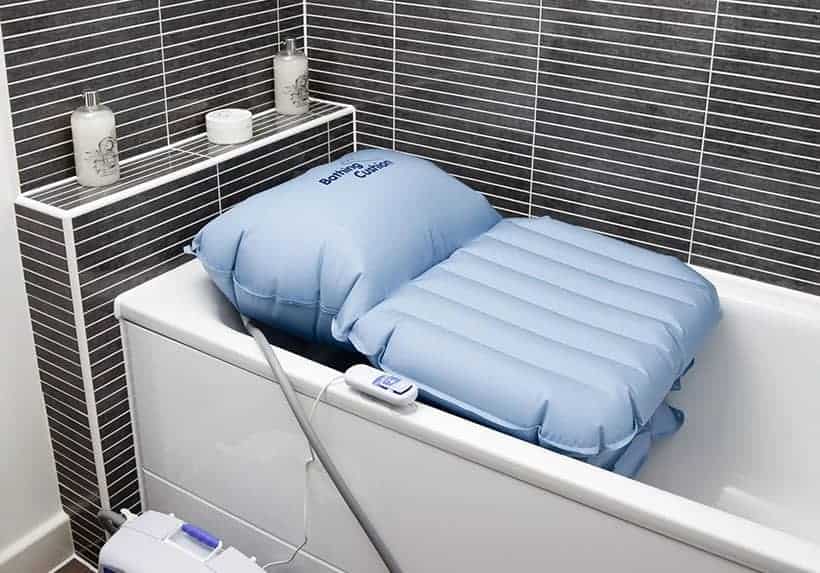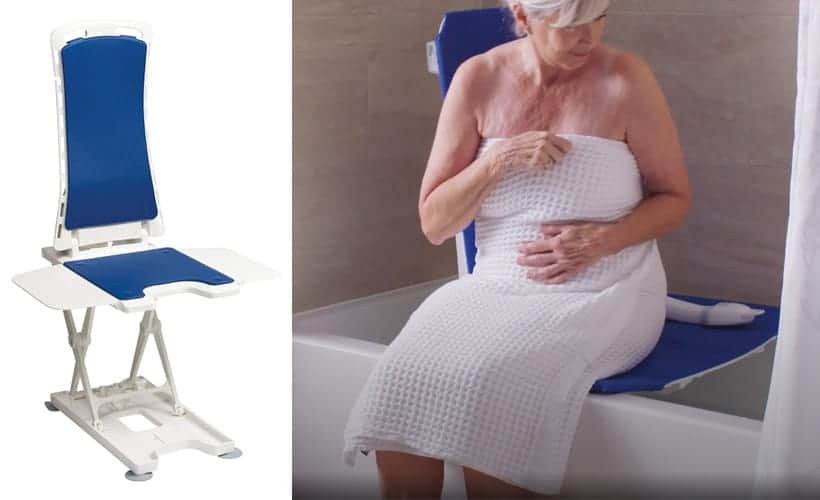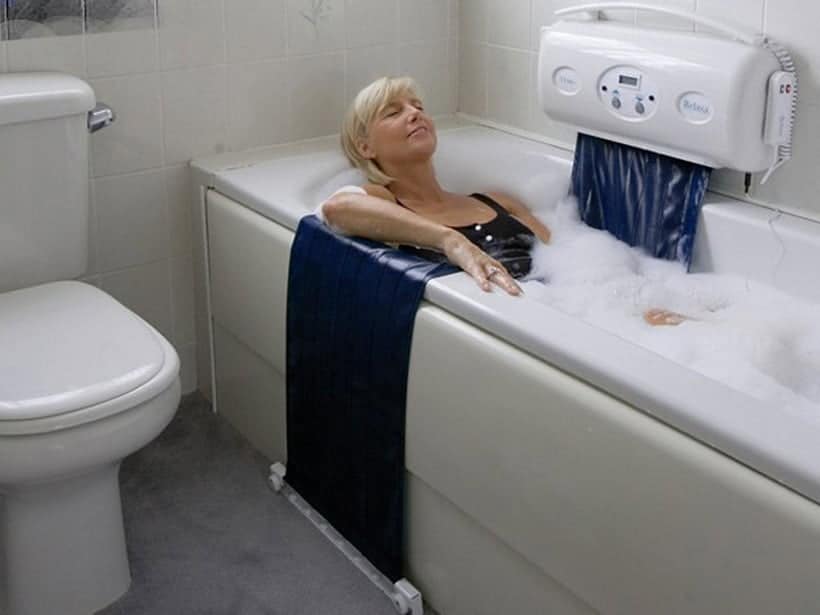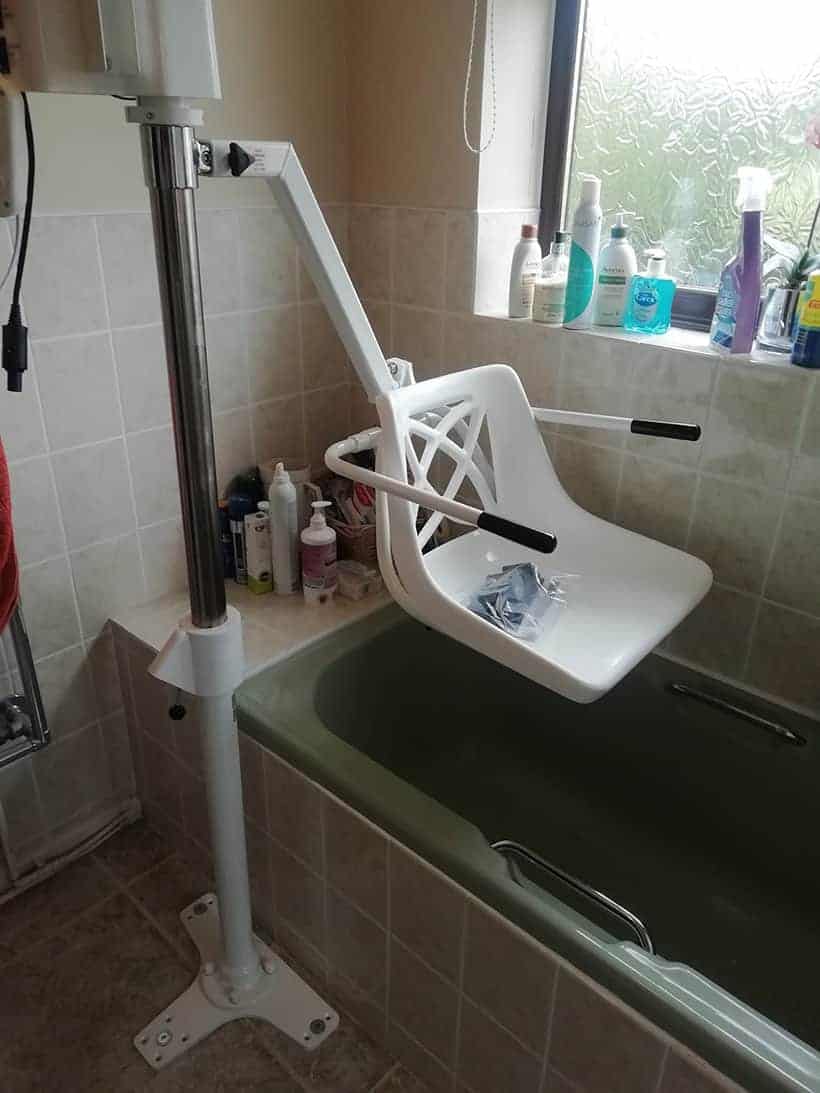Guide to Buying the Perfect Bath Lift for Safety and Comfort
A good soak in the tub might come to mind when you think of unwinding after a long day. But getting in and out of the bath isn’t that simple for some. That’s where a bath lift can be a game changer. It’s a device that helps you get into the tub and back out again without a struggle. Think of it as a trusty pal for your bathroom routine, giving you a boost when needed.
Picking the ideal bath lift isn’t just about making bath time easier; it’s a serious move for staying safe and keeping your independence. Slips in the bathroom are no joke, and the last thing you want is a fall. So, you’ve got to choose wisely to make sure your bath lift is your ally, keeping you steady and secure. It’s about marrying comfort with peace of mind, knowing you can enjoy a good soak without worry.
Assessing Your Needs – 1st Step to Choosing the Right Bath Lift
You’ve got to start by taking a good, hard look at what you need. First up, think about your mobility requirement. Are you dealing with limited mobility that makes stepping over the bath rim tough? Or maybe you’ve got strength issues that challenge getting up from a seated position.
It’s not just about what you need now but also what you might need down the line. Bath lifts like inflatable bath seats or ones with swivel seats might be the ticket if you’re after something that will adjust to your mobility level as it changes.
Then, you’ve got to size up your bath. Not all baths are made equal, and that’s a fact. Do you have a corner bath or a walk-in bath? You’ll need to ensure the bath lift you’re eyeing can fit snugly as a bug and handle the depth. And let’s not forget, the lift’s got to leave enough room for you to enjoy that warm water without feeling cramped.
Don’t forget, you’re not in this alone. A chat with an Occupational Therapist or another healthcare pro can help steer you towards the right choice. They can size up your mobility challenges and point you towards a bath lift that’ll suit you to a T, whether it’s a bath chair lift with a supportive backrest or a bath cushion that’s more low-key.
For the heavier user, it’s vital to select a bath lift that has the appropriate weight capacity to safely accommodate their needs.
Remember, this is about keeping you safe and sound in the suds. So, take your time and get it right.
Key Features to Look For
1. Safety Features
Non-slip Surface
You don’t want any slip-ups – literally. So, you’ve got to check for bath lifts with non-slip surfaces. This means looking at seats and bath steps with materials designed to keep you glued in place, even when things get soapy.
Stability and Locking Mechanisms
Stability isn’t up for debate. You need a lift that’s as solid as a rock. Look for bath lifts with strong locking mechanisms that will hitch onto the sides of your tub like a leech (but in a good way). This will ensure your lift stays put, even if you move around a lot.
2. Comfort and Design
Adequate Seat Size and Padding
Cramped and hard seats? No, thank you. You want a throne fit for a king or queen. The seat should have enough room for you to sit comfortably and enough padding to make long soaks a pleasure, not a pain.
Ergonomic Controls for Ease of Use
The last thing you want when trying to relax is a battle with complicated controls. Look for a lift with simple hand controls that are easy to understand and use. Think waterproof remote controls or buttons that make sense without needing a manual.
3. Weight Capacity
Matching the Lift to the User’s Weight
This is a biggie. The bath lift has to be able to handle your weight. Most lifts have a maximum user weight listed clearly. But you’re not just looking for the bare minimum here. You want some wiggle room to ensure the lift can handle you comfortably without any strain.
Types of Bath Lifts And The Respective Pros & Cons
Navigating the maze of bath lift types can be like picking out the best seat at a concert. You want the perfect view (or soak) without any fuss. Here’s the lowdown on different bath lift types and how to pick one that suits your tune.
1. Inflatable Lifts

Ease of Use and Comfort
Inflatable bath lifts are the couch potatoes of the bath lift world. They’re all about comfort. With a button press, the lift either inflates to lift you up or deflates to lower you down into the bath water. It’s like having a personal cloud in your tub – one that’s often kitted out with a comfy, hygienic cover for extra comfort.
Storage and Portability
Because they can deflate, they’re top-notch in saving space. You can just tuck them away when not in use. Planning a trip? These guys can be the travel buddies you never knew you needed.
Battery Life and Charging
They typically run on rechargeable batteries. This means keeping an eye on battery life is crucial. No one wants to be stuck in the middle of a deflation with no juice left. Regular charging ensures your inflatable design doesn’t leave you high and dry (or wet and stuck).
Pros:
- Adjustable Firmness: You can control the firmness by adjusting the air pressure, providing a customized and comfortable bathing experience.
- Portable: They’re easy to deflate and pack away, perfect if you’re heading away from home or need to share the bathroom with others who don’t require the lift.
- Ease of Entry: When deflated, they sit flat, making it easier to get into the bathtub.
Cons:
- Stability: They might not offer the same stability as a non-inflatable bath lift, which can be a concern for some users.
- Durability: While they’re built tough, inflatable bath lifts can be prone to punctures or leaks over time.
- Battery Life: You need to ensure the battery power is adequate for operation, as a deflated lift mid-bath due to power loss could be inconvenient and unsafe.
2. Mechanical Lifts

Sturdy and Trustworthy
The majority of bath lifts in the UK are mechanical bath lifts, serving as the industry standard for reliable and secure bathing experience. These battery-powered devices allow for safe and independent bathing, gently lowering and raising the user from the bath using simple button controls. Think of them as your bathing butler; they’re ready to serve at the touch of a button.
Installation and Ease of Use
No heavy winding or lever-pulling here – just a fully charged battery, and you’re good to go. These mechanical wonders require installation, and while some can be easily set up without professional help, others might benefit from a technician’s touch to ensure everything’s fitted perfectly.
Maintenance
Keep an eye on the battery level, but rest easy knowing you won’t have to deal with the upkeep of manual systems. It’s about timely charging to prepare your bath lift chair for your next soak.
Pros:
- Convenience: The battery-powered operation offers an effortless lifting experience without any manual strain.
- Comfort: The seat’s travel range is adjustable, allowing you to move from a comfortable chair height to nearly the bottom of the bath, providing maximum immersion and ample legroom for a truly relaxing soak.
- Back Support: Most bath lift chairs boast an adjustable backrest with variable reclining angles, allowing you to shift from an upright position to your preferred tilt for optimal comfort and support while you bathe.
- Reliability: They offer consistent performance with minimal maintenance apart from regular charging.
- Independence: Enables users to enjoy a bath without assistance, promoting independence in self-care.
Cons:
- Battery Dependence: You’ll need to remember to charge the lift, as a drained battery could disrupt your routine.
- Weight: These removable bath lifts weigh around 10kg can be a bit much for some, particularly older adults, to handle comfortably.
- Space Flexibility: They are designed for easy removal, but when in place, they take up a fixed amount of space in the bathtub, which might require adjustments to your bathing setup.
Check out these 8 best battery-powered mechanical bath lifts in the UK.
3. Belt Bath Lifts

Ease of Use and Comfort
Belt bath lifts are like the Swiss Army knife of bath aids. They’re versatile, offering a safe and secure way to lower you into and lift you out of the tub. You sit on a belt, which is part of a mechanism attached to your bath. With a button push, the belt tightens to lift you or loosens to lower you, ensuring you get into your bath without a hitch.
Storage and Portability
These lifts are slimline superstars. The belt retracts, meaning the system takes up very little space. It’s a breeze to keep it out of the way when it’s not in use, making it an ideal bathroom aid for shared spaces.
Weight Capacity and Adjustability
Belt bath lifts can handle a good range of weights, catering to a wider audience. They’re adjustable, which means they can be set up to work with various bath sizes and shapes, from deeper baths to more standard models.
Pros:
- Compact Design: With their retractable belts, these lifts are barely noticeable when not in use.
- Ease of Installation: They can be installed without major bathroom renovations.
- Lower Cost: Often more affordable than full chair lifts, making them accessible for tighter budgets.
Cons:
- Stability: The belt system may feel less stable than a solid chair, particularly for those with limited core strength.
- Support: There’s less physical support than you’d get from a chair, so it’s better suited to those with moderate mobility who can sit without needing a backrest.
- Requires Fitting: Unlike some portable options, belt lifts must be properly fitted to your bath, which may add an extra step to the setup process.
4. Bath Hoists

Robust Lifting Power
Bath hoists stand out for their solid construction and lifting capability. Often seen in healthcare settings, they provide substantial support for lifting individuals in and out of the bath. These hoists, operated manually or with an electric motor, lift a person over the bath, requiring minimal physical effort from the user.
Installation Considerations
Installing a bath hoist can be more involved than other bath lifts. Because they’re designed to lift from outside the bathtub, they may require professional fitting to ensure they’re securely attached to the floor or wall, depending on the design. A bathing aid perfect for individuals with reduced mobility.
Maintenance Routines
Regularly checking the integrity of the mechanical parts for manual hoists is essential. Electric hoists need their batteries charged and their components checked for smooth operation. Still, typically, they demand less day-to-day attention than other mechanical systems.
Pros:
- Lift Range: With a hoist, you have a greater range of motion, allowing for easier transfer in and out of the bath. Especially helpful for users with limited mobility.
- High Weight Capacity: These devices are typically built to handle more weight, making them suitable for a broader range of users.
Cons:
- Space Requirements: Bath hoists generally require more space around the bathtub to operate effectively, which may not be suitable for smaller bathrooms.
- Installation: The installation process is more complex and requires professional assistance to ensure safety and functionality.
- Limited Independence: Unless equipped with powered controls, bath hoists may not be suitable for independent bathing, as manual models require assistance from a caregiver.
- Expense: The cost for both the unit and the installation of a bath hoist can be substantial, representing a significant investment.
Bath Lift Choices and Mobility Considerations
Selecting the Right Bath Lift for Enhanced Safety and Comfort
The quest for the perfect bath lift is primarily determined by the user’s mobility level and specific needs. For older people, stability and ease of use are paramount; they often find a powered bath chair equipped with a sturdy frame, swivel seat, and simple control buttons as a game-changer. These features are crucial, addressing the common mobility limitations accompanying ageing and ensuring a safe, independent bathing experience.
Individuals with disabilities require a tailored approach, depending on their mobility range. Some may be well-served by a belt lift, offering minimal support for those with partial mobility. In contrast, others might necessitate the enhanced back support and comfort of a reclining bath chair, complete with safety features such as non-slip surfaces and accessible emergency controls.
Paediatric bath lifts are a lifeline for children, especially those with special needs. These lifts, often adjustable and adorned with vibrant designs, provide the necessary security and make bath time fun and stress-free. They are built to grow with the child, reflecting the evolving needs of young users.
Inflatable lifts present a unique solution for the frequent traveller or those with fluctuating mobility. They offer the convenience of portability and adjustability. However, they may not be the go-to for individuals with severe mobility issues due to their less rigid structure.
Mobility is the linchpin in choosing a bath lift. Those with significant limitations might lean towards the autonomy of powered lifts with simple remote controls over manual bath lifts.
Moreover, the physical stature of the user can’t be ignored. Those with a larger build need a lift that can handle greater weight, possibly with enhanced features such as extra-wide seats or a reinforced structure.
Ultimately, the intersection of one’s specific needs with the suitable bath lift transforms bathing from a daily task into a pleasurable, dignified ritual. Whether it’s the portability of inflatable seats or the solid dependability of mechanical options, the best lift is the one that harmonizes with the individual’s lifestyle and requirements, ensuring a safer, more enjoyable bathing experience.
Installation and Maintenance
Considering the installation of a bath lift is just as important as selecting the right one. Some are a cinch to set up independently, while others will have you dialling for a pro.
1. Professional Installation vs. DIY
Battery-Powered Mechanical Chair Lifts
- Straightforward Assembly: Battery-powered mechanical chair lifts often come with user-friendly manuals, making installation doable for most people with basic tools and some DIY inclination.
- Minimal Structural Changes: These lifts typically require no permanent alterations to the bathroom, allowing for a non-invasive setup that can be as easily removed or adjusted as needed.
Inflatable and Portable Bath Lifts
- Quick Setup: Usually comes with minimal parts and straightforward instructions, allowing for an easy and fast installation process right out of the box.
- No Tools Required: Often designed to inflate by themselves with a built-in pump or a simple external one, eliminating the need for any tools or professional installation.
- Ready to Go: Designed for immediate use after unboxing, with no fixtures or fittings needed, making them ideal for travel or temporary setups.
- Easy Placement: Can be simply placed into the tub and removed as needed, offering a hassle-free solution for those who share the bathroom with others.
Belt Bath Lifts
- It might go both ways. While some can be set up with a good instruction manual and a bit of patience, others may require professional help to attach to the bath securely. So, it’s always good to consult the manufacturer or vendor about the installation before purchase. Especially if you are not a handy person.
2. Ease of Cleaning
- Inflatable and Portable Lifts: Just wipe them down with a non-abrasive cleaner, and they’re good to go.
- Mechanical Lifts: They need more elbow grease due to their nooks and crannies.
- Water-powered and Belt Lifts: Usually have fewer parts in contact with water, making them easier to dry and clean.
3. Durability and Warranty Considerations
- Warranty: Check the fine print. Longer warranties might hint at better durability, but always read the terms.
- Battery Life: The battery’s longevity will be a key maintenance point for battery-operated lifts.
- Parts Availability: Look into the availability of replacement parts to ensure your lift stays operational over time.
Whether you opt for the independence of a DIY or the assurance of a professional installation, keeping your lift clean and well-maintained will extend its life and performance, making every bath as good as the first.
End of the Day…
Bath lifts are essential for individuals with mobility issues, providing safety, comfort, and independence during bathing. In the UK, the most common are mechanical bath chair lifts — battery-powered units that offer a dependable solution for getting in and out of the tub. These lifts are generally easy to install and maintain, featuring rechargeable batteries and a design that allows for straightforward cleaning.
When choosing a bath lift, it’s crucial to consider the user’s physical requirements, the bathroom’s space, and the bath size. Safety features should include non-slip surfaces and stable locking mechanisms. At the same time, comfort is ensured with an adequately sized and padded seat alongside ergonomic controls.
Bath hoists offer a more extensive lifting range and higher weight capacity, making them suitable for a broader user base. However, they can be bulky, require more space, and may not be ideal for independent bathing without powered controls. The installation of bath hoists can also be intricate and expensive.
A bath lift that matches their weight and mobility level is necessary for those with significant mobility limitations. The right lift can make all the difference, turning daily necessities into a relaxing, dignified experience. Ultimately, whether opting for a portable, inflatable model or a sturdy, fixed bath chair, the aim is to find a bath lift that harmonizes with the user’s needs, ensuring safe, comfortable, and enjoyable bathing.

